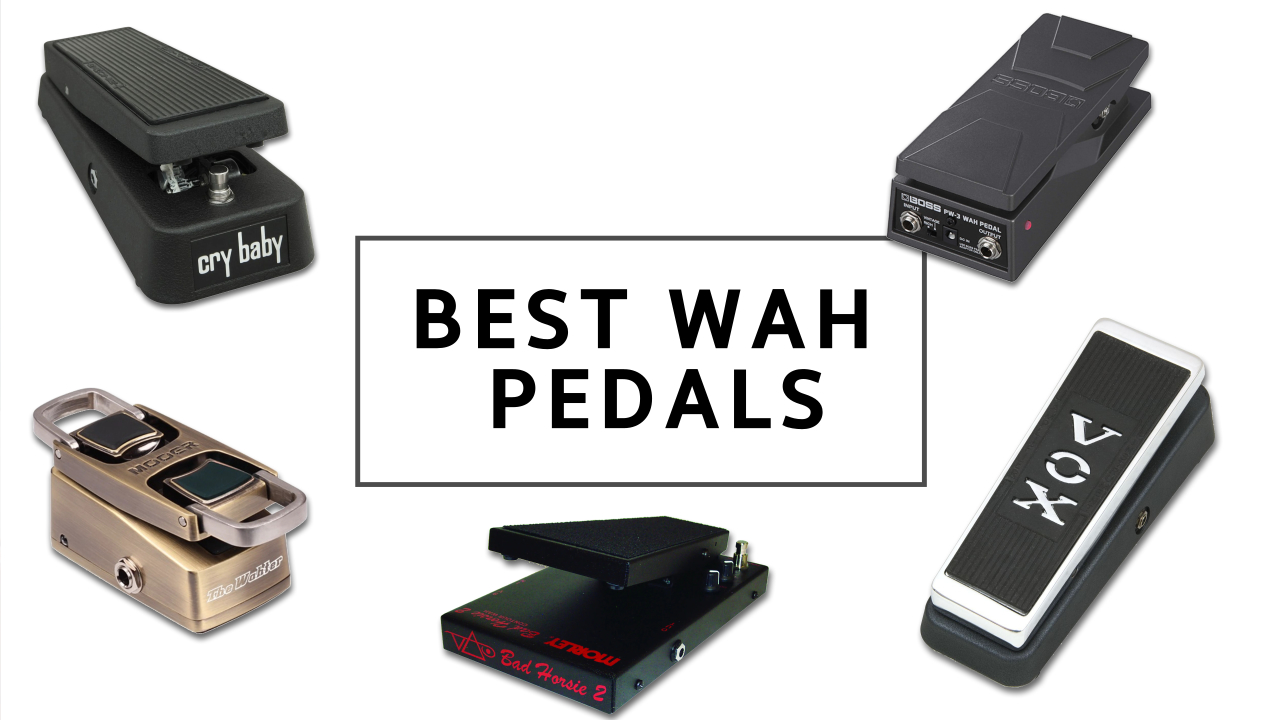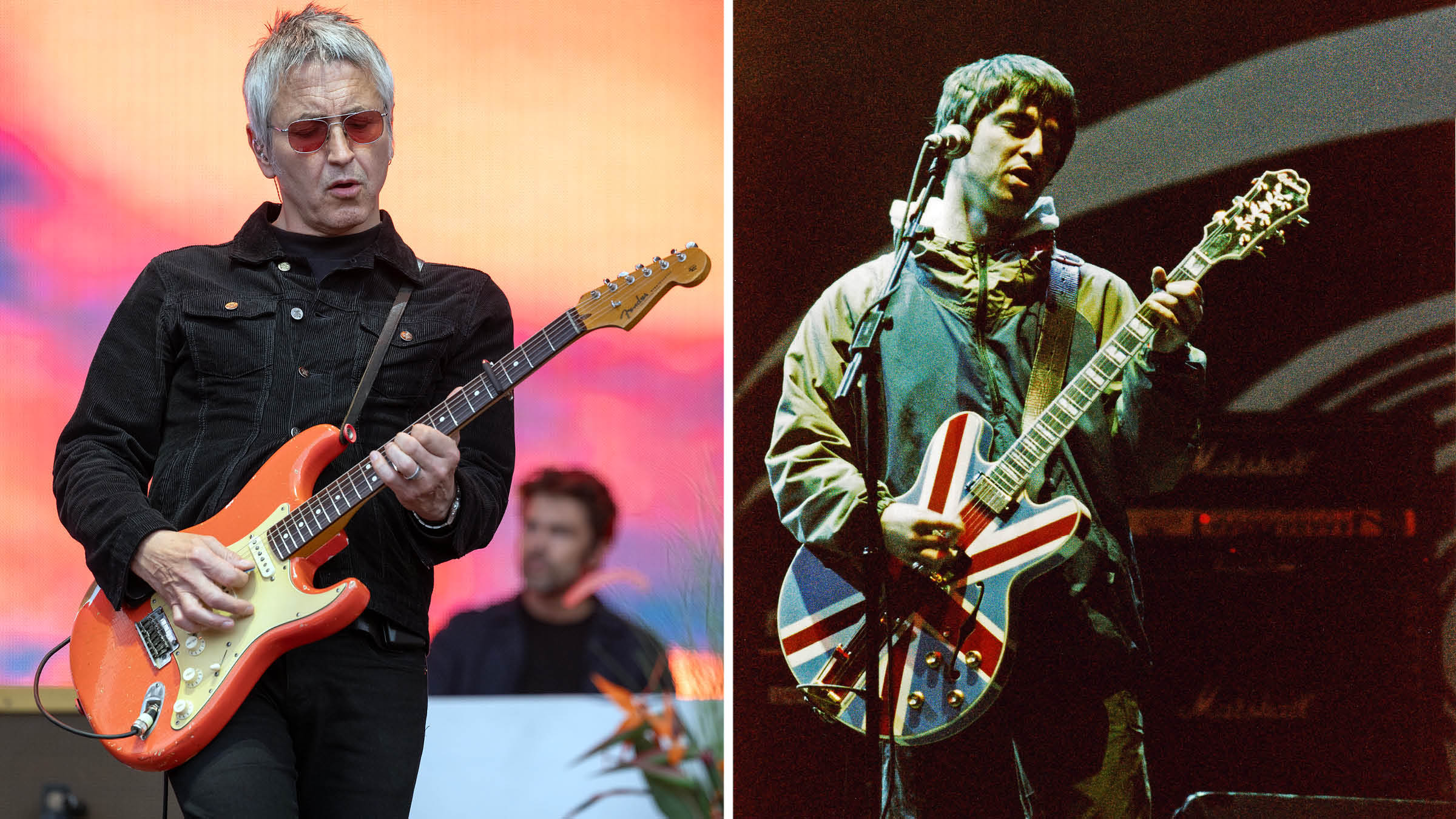The 25 greatest wah solos of all time
From Satriani to Sabbath, here are the greatest wah moments in guitar history

Since the guitar's inception, there have been countless talented players who could make the instrument sing, but it wasn't until the mid-Sixties and the arrival of the wah pedal that guitarists could make it cry.

Best wah pedals: add an essential tone-shaping effect to your pedalboard
Perhaps because it entered the collective consciousness at the hands - or feet, rather - of guitar gods like Jimi Hendrix and Eric Clapton, the wah pedal has been a vital part of the rock and roll lexicon since it was introduced by Vox, finding favor with guitarists who wanted to bring a whole new level of expressive possibilities to their playing.
More than any other effect pedal, the wah has played a key role in some of modern guitar's shining moments, from Slash's epic, ascending run in Sweet Child O' Mine to Eddie Hazel making wah synonymous with funk in the Seventies to Hendrix simply doing that voodoo that he did so well.
In honor of its place in rock history, the Guitar World staff recently picked out the very best wah solo moments of all time, each a snapshot of a great guitarist letting his voice be heard through a truly rock and roll pedal. Of course, we considered the quality of the solo itself and the song's iconic status in the world of rock and roll.
25. The Stooges - 1969 (1969)
Guitarist: Ron Asheton
Raw, visceral and distorted to the max, Ron Asheton's solo on this Stooges classic may not win any composition awards, but it was the perfect compliment to Iggy Pop's guttural snarl.
24. James Gang - Walk Away (1971)
Guitarist: Joe Walsh
All the latest guitar news, interviews, lessons, reviews, deals and more, direct to your inbox!
It comes in just at the end of the song, but Joe Walsh's solo spot on "Walk Away" is a bit of a late-in-the-game show-stealer. Since 2007, Walsh has had his very own signature wah made by Real McCoy Custom.
23. Living Colour - Cult of Personality (1988)
Guitarist: Vernon Reid
Cult of Personality was the song that instantly made Vernon Reid a household name in the alt metal community, combining manic use of the wah with a stream-of-conscious flurry of notes straight from the mind of a true guitar junky. Even more impressive, Reid stated in a 1988 Guitar World interview that the solo was a first take.
22. Chicago - 25 or 6 to 4 (1970)
Guitarist: Terry Kath
On the second half of a lengthy guitar solo on this Chicago classic, Terry Kath introduces a distortion-drenched, wah-driven guitar line that melds incredibly well with the song's horn section. Fun fact: Kath was once referred to as "the best guitar player in the universe" by Jimi Hendrix.
21. Funkadelic - Maggot Brain (1971)
Guitarist: Eddie Hazel
On the opposite end of the the spectrum from the ultra-tight, ultra-clean guitar sounds many listeners identify with funk is Eddie Hazel's tone on this 10-plus-minute track from Funkadelic, which features no vocals and serves primarily as a vehicle for Hazel to explore the deepest reaches of space in his wah-wah-powered mothership.
20. Jane's Addiction - Stop (1990)
Guitarist: Dave Navarro
Written all the way back in 1986, it would take four years for this Ritual de lo habitual cut to be unleashed upon the music world as large, climbing to No. 1 on the Billboard Modern Rock Tracks behind the strength of a high-energy performance from vocalist Perry Farrell and a muscular, wah-driven lead from Dave Navarro.
19. Lynyrd Skynyrd - The Needle and the Spoon (1974)
Guitarist: Allen Collins
A clear tip of the hat to Eric Clapton's solo from White Room, Allen Collins pulls out the wah to blend Sixties psychedelia seamlessly into a bona-fide Southern-rock classic.
18. Red Hot Chili Peppers - If You Have to Ask (1991)
Guitarist: John Frusciante
On this cut from 1991's mega-selling Blood Sugar Sex Magik, Chili Peppers guitarist John Frusciante turns in a sparse, stop-start wah solo fitting for the song's funk-rock minimalism. Fun fact: On the studio version, you can hear the band and production crew applauding Frusciante's guitar work as the song comes to an end.
17. Led Zeppelin - Whole Lotta Love (1969)
Guitarist: Jimmy Page
While much of the bizzare, alien soundscape in the middle section of Whole Lotta Love is directly attributable to Jimmy Page's groundbreaking use of backwards tape echo and Page and engineer Eddie Kramer "twiddling every knob known to man," the wah pedal does make an appearance, adding a valuable, extra dimension to Page's most otherworldly guitar work this side of the Lucifer Rising soundtrack.
16. Steve Miller Band - The Joker (1973)
Guitarist: Steve Miller
Perfect for all those midnight tokers out there, Steve Miller's laid-back lead work on The Joker doesn't go overboard on the wah, opting instead for the tasteful, restrained approach. Fun fact: This song shot back to the top of the charts in 1990, thanks to a popular ad for Levi's jeans.
15. Jeff Beck Group - I Ain't Superstitious (1968)
Guitarist: Jeff Beck
On the debut album from the Jeff Beck Group, Beck uses this wah-laden take on a Howlin' Wolf tune to show off his mastery of the multitude of sounds one can coax out of a guitar. Somehow, he still continues to baffle us with this skill.
14. Kenny Wayne Shepherd - Blue on Black (1997)
Guitarist: Kenny Wayne Shepherd
Kenny Wayne Shepherd burst into the mainstream consciousness with this cut off his 1997 album, Trouble Is ... Any questions over who he was hoping to channel are laid to rest with the inclusion of a cover of Voodoo Child as the single's B-side.
13. Joe Bonamassa - Pain and Sorrow (2002)
Guitarist: Joe Bonamassa
Another blues-rock revivalist, Joe Bonamassa lays out some fiery wah work on this deep cut from his sophomore album, So, It's Like That.
12. Manfred Mann's Earth Band - Blinded by the Light (1976)
Guitarist: Dave Flett
This tune may have originally been written by Bruce Springsteen, but it didn't become a hit - and eventually a classic - until guitarist Dave Flett and the rest of Manfred Mann's Earth Band got a hold of it for 1976's The Roaring Silence.
11. Ozzy Osbourne - Gets Me Through (2001)
Guitarist: Zakk Wylde
Split between powerful melodies and a heaping helping of shred, the solo from Gets Me Through sees Zakk Wylde take his Hendrix Cry Baby to the edge and back on this standout track from Ozzy's 2001 comeback record.
Zakk would eventually merit his very own wah pedal, complete with the Fasel inductor that was responsible for some of the classic wah sounds of the Sixties.
10. Joe Satriani - Surfing with the Alien (1987)
Guitarist: erm, Joe Satriani
Surfing with the Alien sees Satriani put the pedal to the metal in every conceivable sense, not the least of which is his stunning work with the wah pedal. Paired with a Tubedriver and a classic Eventide 949, the wah provides just enough control over his alien tone for Satch to weave his way in and out of an asteroid belt of notes.
9. Black Sabbath - Turn Up the Night (1981)
Guitarist: It's a rare occasion when Tony Iommi brings out the wah, but on this Mob Rules cut, the Godfather of Heavy Metal uses it too great effect, upping the aggression level one step further on what may be his most furious studio solo.
8. Vaughan Brothers - Telephone Song (1990)
Guitarist: Stevie Ray Vaughan
Were you expecting to see the long-winded instrumental Say What! from Vaughan's Soul to Soul album? Not a chance, not when this mini-masterpiece of a wah solo exists. Even without the wah, it's one of his best-constructed, catchiest solos. This track comes from SRV's first full album with his brother, Jimmie Vaughan - which, sadly, turned out to be his last record.
7. Steve Vai - Bad Horsie
Guitarist: Steve Vai
Bad Horsie presents one of Vai's most crushing riffs, but not without reminding us of the guitar virtuoso's skill with the wah.
6. Pearl Jam - Even Flow (1991)
Guitarist: Mike McCready
"That's me pretending to be Stevie Ray Vaughan," Pearl Jam guitarist Mike McCready told Guitar World of his classic solo from "Even Flow" back in 1995.
A fitting tribute to the late SRV, the solo saw McCready break out the wah and churn out perhaps the most iconic solo of the grunge era.
5. Pantera - A New Level - (1992)
Guitarist: Dimebag Darrell
Dimebag Darrell is among those guitarists that utilized the wah pedal more subtly, using it as a tone control in most cases. This isn't one of those cases.
Darrell's use of the wah on his A New Level solo is as surgically precise as one comes to expect from the master craftsman, lending an all new connotation to the phrase, "on a Dime."
4. Metallica - Enter Sandman (1991)
Guitarist: Kirk Hammett
We're going to let Kirk take this one: "There's something about a wah pedal that really gets my gut going!
People will probably say, 'He's just hiding behind the wah.' But that isn't the case. It's just that those frequencies really bring out a lot of aggression in my approach." (Read the full 1991 interview with James and Kirk here)
3. Guns N' Roses - Sweet Child O' Mine (1987)
Guitarist: Slash
Known to break out the wah and fiddle around with Voodoo Child (Slight Return) as a live lead-in for Civil War, Slash forged his own piece of rock and roll history with his unforgettable ascending run into one of the shining moments in Eighties guitar rock.
Bookended by the feral yowl of frontman Axl Rose, Slash makes this would-be ballad anything but with a fierce lead made possible by a stock Cry Baby wah.
2. Cream - White Room (1968)
Guitarist: Eric Clapton
A masterful performance on Tales of Brave Ulysses aside, with White Room, Eric Clapton virtually wrote the book on how the wah pedal would be used in the context of rock guitar for decades to come.
1. The Jimi Hendrix Experience - Voodoo Child (Slight Return) (1968)
Guitarist: Jimi Hendrix
The go-to song of any guitarist trying out a new wah pedal at Guitar Center, Voodoo Child (Slight Return) stands as a mammoth moment in rock history, setting a mark that has yet to be breached by any ambitious guitarist with a Cry Baby and a dream.
Of the song's recording, engineer Eddie Kramer recalls that the track "was recorded the day after Jimi tracked Voodoo Chile, the extended jam on Electric Ladyland featuring Traffic’s Stevie Winwood on organ and Jefferson Airplane bassist Jack Casady.
Basically, Jimi used the same setup - his Strat through a nice, warm Fender Bassman amp. Jimi’s sound on both tracks is remarkably consistent, leading some to think they were recorded at the same session.” Stevie Ray Vaughan's version is no slouch either, by the way.
